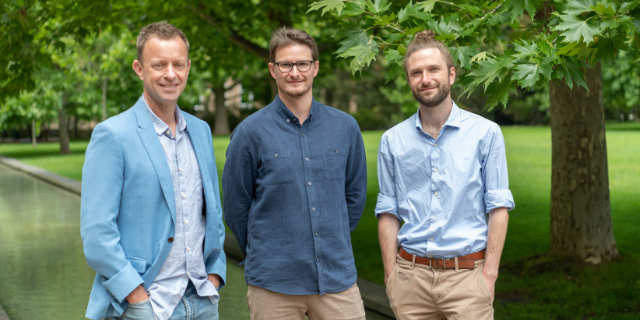Dr Jeffrey Liddell’s research makes NHMRC’s Ten of the Best Projects
Biochemistry and Pharmacology research fellow receives honour for age-related brain disease work.
The mid-career neurobiologist’s research titled: Metal complexes for the treatment of age-related diseases of the brain has been selected in the 13th edition of the NHMRC’s top 10 list. The initiative highlights outstanding Australian research that is contributing to the prevention, diagnosis and treatment of health issues facing Australians.
Dr Liddell’s research investigates the underlying causes of degenerative diseases of the central nervous system and the development of therapeutics. His expertise is glial cell biology – examining how these normally supportive cells in the brain can contribute to neurodegeneration – and how they can be therapeutically targeted to either bolster their beneficial mechanisms or impede their pathological toxicity.

He joined the research group of Associate Professor Anthony White at the University of Melbourne in 2011 to investigate copperbased drugs for the treatment of neurodegeneration, and he now continues this work in the research group of Associate Professor Peter Crouch.
CONTRIBUTING TO HUMAN HEALTH
“Our research demonstrates that CuII(atsm) exhibits strong efficacy in animal models of Parkinson’s disease, stroke, sepsis, and in particular motor neurone disease,” explains Dr Liddell.
“The latter has been verified across four independent research teams, including the ALS Therapy Development Institute, which described that their assessment of CuII(atsm) was the first time they were able to replicate reported efficacy in more than 15 years of testing putative drugs.”
As a direct result of the research, the drug has been translated to clinical assessment. “Phase I clinical trials with motor neurone disease and Parkinson’s disease patients both generated very promising effects, and a Phase II/III trial in motor neurone disease patients has recently concluded.”
Ultimately, the research has identified a potential drug, characterised its mechanisms, gained insight into disease processes and translated the drug to clinical trials in Australian patients with neurodegenerative disease.
“Regardless of whether the drug succeeds – and we hope it does – this is a success story for basic research,” says Dr Liddell.

NEXT STEPS
Each new insight made leads to more interesting questions about disease processes and avenues for therapeutic intervention. “For instance, we have generated complementary findings, including strong evidence that our drug may be effective in multiple sclerosis, indicating the intriguing possibility that many prominent neurodegenerative conditions may share an underlying – and treatable – cause, and we are actively pursuing this.”